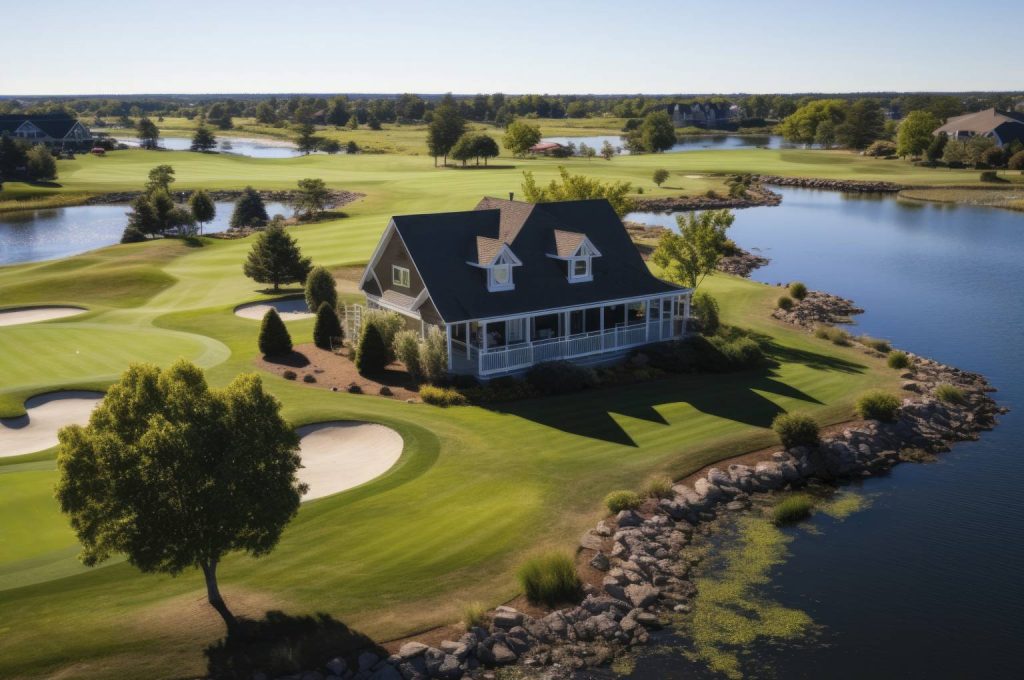
A golf course isn’t just about fairways and greens; it’s about harmony with nature—and no feature embodies this better than a well-designed water body. A professional golf course water bodies designer plays a crucial role in crafting lakes, streams, and ponds that are not just visually stunning but also environmentally sustainable and strategically challenging. This blog explores how modern golf architectural design architects and golf design companies develop water bodies that align with hydrology, support course irrigation, and create memorable golfing moments. With insights into the role of golf designer architects, we delve into how India’s top golf designers and golf course architecture firms incorporate water elements that reduce maintenance and enhance biodiversity. Whether you’re designing a championship course or a resort getaway, working with an experienced golf designer firm ensures your project balances beauty, playability, and sustainability.
Water features in golf courses are not just visual highlights—they serve strategic, ecological, and functional purposes. A well-positioned lake or stream can challenge golfers, direct course flow, and support local ecosystems. Collaborating with a skilled golf course water bodies designer ensures these elements enhance both the experience and the environment.
A golf course water bodies designer is trained to manage land contouring, drainage integration, and aesthetic placement. Their expertise includes working with golf architectural design architects to ensure water features become core parts of the golf course narrative, not just decorative add-ons.
Water hazards can make or break a hole. They introduce decision-making elements, influencing club selection and risk-taking. Expert golf designer architects place water bodies to shape shot angles and demand precision, making play both fun and demanding.
Top golf design companies use native plantings, slope gradation, and low-impact construction to build eco-sensitive water bodies. These features not only look spectacular but require less maintenance, reduce water usage, and improve site biodiversity.
Designing effective water features requires understanding monsoon flow, sedimentation, water retention, and algae control. Golf course architecture firms must solve these through proper grading, lining systems, and ongoing filtration solutions.
An experienced golf designer firm brings decades of insight into what works—and what doesn’t. From handling tricky water tables to ensuring seamless integration with the course’s natural flow, their know-how reduces long-term risk and cost.
Today’s top golf designers in India are experimenting with floating islands, naturalised banks, and multifunctional wetlands. These trends combine aesthetic beauty and eco-function, making golf courses more engaging and sustainable.
GDI has designed water features for some of India’s most iconic golf courses—blending design vision with sustainable practices. From creek integration to swale routing and large-scale water harvesting systems, GDI’s golf designer architects ensure every drop of water supports playability, ecology, and aesthetics.
A golf course water bodies designer crafts and places lakes, ponds, streams, and water features within a golf course. Their work balances beauty, playability, drainage, and sustainability while enhancing the visual appeal of the course.
Water features can turn a routine hole into a strategic masterpiece. Proper placement by a golf designer architect demands smart play, encourages risk-reward decisions, and makes a course more memorable.
In India, challenges include monsoon management, algae growth, and water conservation. An experienced golf designer firm addresses these with smart layouts, drainage grading, and low-maintenance design features.
They integrate eco-friendly materials, reduce chemical dependency, and design for natural drainage. This includes using native plants and filtration swales to support a healthy ecosystem.
Top golf design companies bring proven experience, ensuring that the water features are not only beautiful but also functional, durable, and cost-efficient over time.
